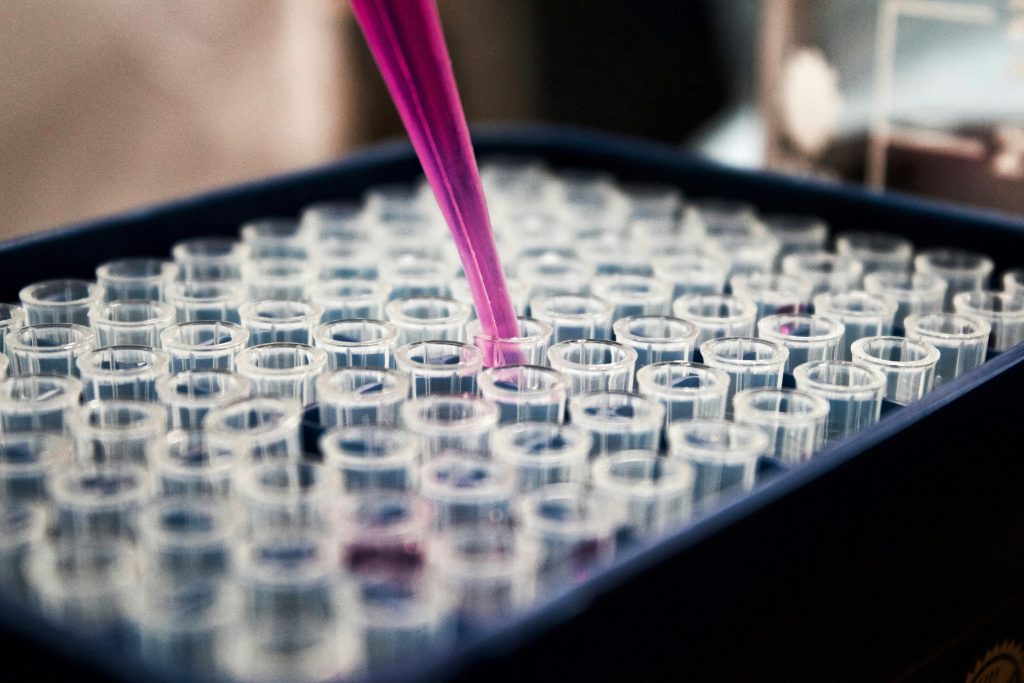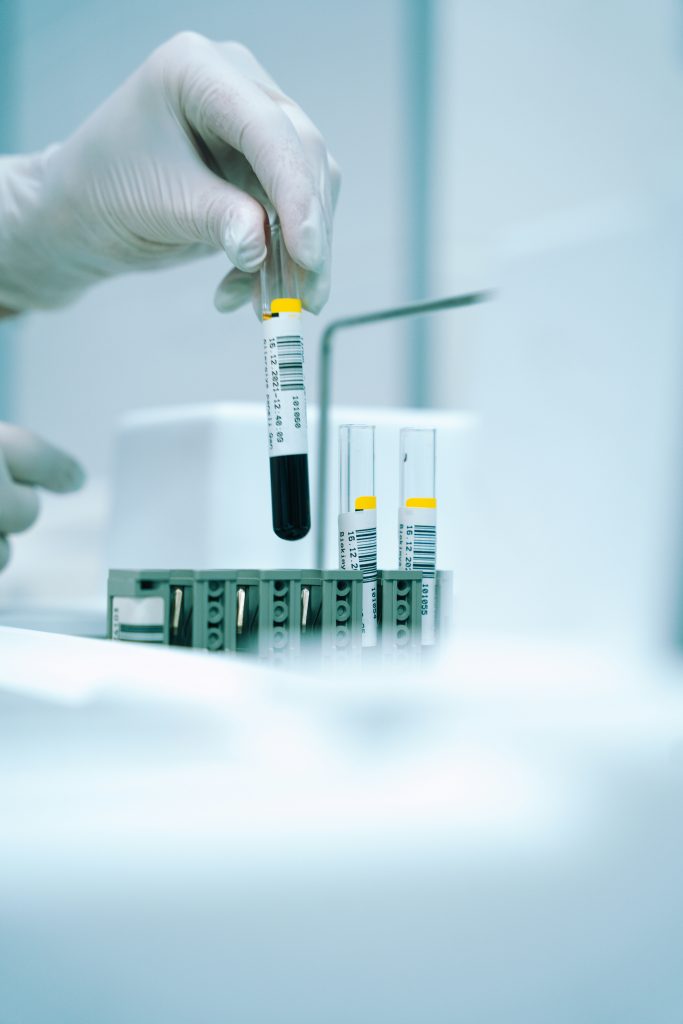Table of Contents
ToggleUnderstanding Your Semen Analysis Results: A Complete Guide

Understanding semen analysis results is crucial for evaluating male reproductive health and fertility. This comprehensive article explains what a semen analysis measures, how to interpret outcomes, and the factors that can affect test results. For those seeking diagnostic laboratory services, proper interpretation of test outcomes is essential when planning treatment options and further investigations. At LabTestsDubai.com, we are committed to providing precise diagnostics for improved health outcomes. This article not only discusses technical aspects and parameters of semen analysis but also outlines actionable steps for subsequent medical decision-making. The sections below detail the measures, interpretations, influencing factors, and preparation tips regarding semen analysis results.

What Is a Semen Analysis and Why Is It Important?
A semen analysis is a test that evaluates semen quality and quantity to determine a man’s fertility potential. It measures parameters such as sperm concentration, motility, morphology, and volume. The test is used to investigate infertility issues or assess the overall status of the male reproductive system. By examining the number, movement, and shape of sperm, clinicians can identify abnormalities that may affect fertilization. In addition to fertility, semen analysis results can reflect general health issues such as inflammation or hormonal imbalances. Understanding these results is key for patients, especially when planning treatments like intracytoplasmic sperm injection (ICSI) or managing conditions such as retrograde ejaculation.
What Does Semen Analysis Measure? Key Parameters Explained
Semen analysis measures several key parameters: • Semen volume, typically ranging between 1.5 to 5 mL. • Sperm concentration, with normal values above 15 million sperm per mL. • Sperm motility, assessing the ability of sperm to move; reduced motility (asthenozoospermia) may impair fertility. • Sperm morphology, which examines the shape and structure—abnormal forms can hinder fertilization. Other indicators include semen pH, viscosity, and liquefaction time, which help assess the functionality of accessory glands such as the seminal vesicles and prostate. These parameters together form a fertility profile guiding further diagnostic and treatment decisions.
How Does Semen Analysis Relate to Male Fertility?
Normal semen parameters are essential for natural conception. Deviations—such as low sperm count, poor motility, or abnormal morphology—can decrease the chance of fertilization. In addition, abnormalities may reveal underlying issues like inflammation or infection. Semen analysis also guides assisted reproductive technology (ART) procedures such as IVF and ICSI, after correlating results with hormonal profiles and physical exams. This comprehensive view enables clinicians to suggest lifestyle adjustments or specific medical interventions aimed at enhancing sperm quality.
When Should You Consider Getting a Semen Analysis?
A semen analysis is advisable for men experiencing difficulty conceiving after a year of regular unprotected intercourse or when risk factors like testicular trauma exist. It is also recommended for those with concerns about reproductive health or symptoms such as pain, swelling, or genital abnormalities. Routine fertility evaluations, pre-assessments for assisted reproduction (e.g., ICSI), and screenings for sperm donation are further reasons to undergo this analysis.
How Do You Interpret Your Semen Analysis Results?
Interpreting semen analysis results requires comparing obtained values to standard thresholds, such as those defined by the World Health Organization (WHO). Reports typically detail measures like concentration, motility, morphology, volume, and pH. Discussions with a clinician help determine if deviations are significant and whether treatment or additional tests are necessary.
What Are Normal Semen Analysis Values?
Normal values are based on clinical guidelines. Typically: • Semen volume should be above 1.5 mL. • Sperm concentration should exceed 15 million sperm per mL. • At least 40% of sperm should be motile, and about 4% should show normal morphology. • Semen pH usually ranges between 7.2 and 8.0, with liquefaction within 30 minutes post-ejaculation. These benchmarks help indicate fertility potential; deviations may require further evaluation by a urologist or fertility specialist.
What Does Low Sperm Count Mean for Fertility?
A low sperm count (oligozoospermia) indicates that fewer sperm are present in the ejaculate, diminishing the probability of natural conception. Causes include lifestyle factors, infections, genetic conditions, and exposure to environmental toxins. Management often involves dietary improvements, reducing toxin exposure, or medical interventions, and in some cases, assisted reproductive techniques like ICSI.
How to Understand Sperm Motility and Its Impact?
Sperm motility refers to how well sperm move, which is critical for reaching and fertilizing an egg. Significant proportions of sperm must move progressively; reduced motility (asthenozoospermia) may stem from factors such as varicocele, hormonal imbalances, or lifestyle influences like smoking and excessive alcohol consumption. Treatment options may include antioxidants, lifestyle changes, or other interventions to improve motility.
What Is Sperm Morphology and Why Does It Matter?
Sperm morphology assesses the shape and structure of sperm cells. Abnormal sperm may struggle to penetrate the egg, thus reducing fertilization chances. Evaluations focus on the head, midpiece, and tail; high percentages of abnormally shaped sperm may indicate underlying health issues or toxin exposure. Management can often include lifestyle improvements or specific treatments.
What Factors Can Affect Your Semen Analysis Results?
Many factors can influence semen analysis results, including lifestyle choices and medical conditions. Environmental exposures, dietary habits, and exercise habits all impact sperm quality. Additionally, infections, hormonal imbalances, and varicocele can alter semen parameters. Because transient factors like stress or fever might temporarily change results, clinicians often recommend repeat testing for accuracy.
How Do Lifestyle Choices Influence Semen Quality?
Lifestyle factors such as smoking, excessive alcohol use, and poor diet can lower sperm count and motility while increasing abnormal forms. Regular exercise, a balanced diet rich in antioxidants, and a healthy weight typically improve semen quality. Avoiding environmental toxins like heat or chemicals also plays a significant role. Healthcare providers emphasize holistic lifestyle modifications along with regular health assessments.
What Medical Conditions Affect Semen Parameters?
Medical issues that affect semen quality include infections (e.g., prostatitis or epididymitis), hormonal disorders (like low testosterone or thyroid dysfunction), and varicocele—which raises testicular temperature. Genetic abnormalities and autoimmune disorders can also impair sperm production and quality. Addressing these conditions through medical or surgical interventions is important for preserving fertility.
Can Stress and Environment Impact Your Semen Analysis?
Chronic stress elevates cortisol, which can disrupt hormonal balance and impair sperm production. Similarly, exposure to pollutants such as heavy metals and synthetic chemicals is linked to reduced sperm quality and abnormal morphology. Managing stress through exercise, counseling, or relaxation techniques and reducing toxin exposure can help improve results.

What Are the Next Steps After Receiving Your Semen Analysis Results?
After receiving your results, the next steps include reviewing the findings with a specialist. Depending on whether results fall within normal ranges or show abnormalities, your healthcare provider might suggest further tests, lifestyle modifications, or specific treatments. Discussing the results with a urologist or fertility specialist is important to determine if additional hormonal assessments or imaging studies are needed to clarify the underlying cause.
When Should You Consult a Specialist?
Consult a specialist if results are abnormal or if you have been trying to conceive for over a year without success. A specialist can offer a detailed evaluation, discuss potential causes, and recommend repeat testing if results might be affected by temporary factors such as stress or illness. Early specialist consultation can lead to timely interventions and improved fertility outcomes.
What Treatment Options Are Available for Abnormal Results?
Treatment depends on the specific abnormality. Options for low sperm count or motility may include hormonal therapy, medications, or lifestyle changes. Structural issues like varicocele might require surgery. In severe cases, assisted reproductive techniques such as ICSI or IVF may be advised. Treatment plans are customized based on the severity of the findings and the couple’s reproductive goals.
How Can at-Home Semen Analysis Kits Help in Monitoring?
At-home semen analysis kits provide a convenient method for preliminary monitoring of sperm health. They typically assess basic parameters like sperm concentration and motility, allowing patients to track changes over time. Although these kits are useful for initial screening, abnormal results should always be confirmed with a full laboratory analysis.
What Common Questions Do People Ask About Semen Analysis?
Patients and professionals often ask about how semen analysis is performed, the reliability of testing methods, and how frequently the tests should be repeated. Clarifying these questions helps individuals understand their reproductive health and feel confident about subsequent treatment decisions.
How Is a Semen Analysis Performed?
Semen analysis is performed by collecting a semen sample through masturbation into a sterile container. The sample is then sent to a laboratory where tests measure volume, concentration, motility, and morphology. Additional indicators such as pH and viscosity are also evaluated. Patients are advised to abstain from ejaculation for 2–7 days before sample collection to ensure accuracy.
How Reliable Are at-Home Semen Analysis Tests?
Although at-home kits offer preliminary insights into parameters like concentration and motility, they are not as comprehensive or accurate as professional laboratory tests. Detailed evaluations—including assessments of morphology, pH, and viscosity—are best conducted in a clinical setting. Confirmatory testing by professionals is essential if at-home results are abnormal.
How Often Should Semen Analysis Be Repeated?
If initial results are abnormal, repeating the test after two to three months is generally recommended, as spermatogenesis takes about 74 days. Regular follow-up tests help distinguish between temporary fluctuations and persistent issues, thus guiding appropriate treatment decisions.
How Does Semen Analysis Fit Into Overall Male Reproductive Health?
Semen analysis provides objective data that, along with hormonal profiles and physical examinations, offers a comprehensive view of male reproductive health. Beyond diagnosing infertility, semen quality can serve as a biomarker for overall health. Abnormal parameters may indicate systemic issues such as metabolic syndrome or endocrine disorders, prompting early intervention and lifestyle modifications.
What Is the Role of Semen Analysis in Diagnosing Infertility?
Semen analysis is usually the first step in evaluating male factor infertility. It provides quantitative and qualitative data about sperm production, movement, and structure. Abnormalities—such as oligozoospermia, asthenozoospermia, or teratozoospermia—guide further diagnostic tests like hormonal assays or genetic tests and help shape effective treatment plans.
How Does Semen Quality Reflect General Health?
Reduced semen quality has been correlated with higher risks of metabolic, cardiovascular, and endocrine disorders. Indicators such as low sperm concentration or abnormal morphology may serve as early warnings for conditions like obesity or insulin resistance. Thus, semen analysis is valuable not only for fertility evaluation but also as an indicator of general male health.
What Lifestyle Changes Improve Both Fertility and Health?
Lifestyle modifications such as regular exercise, a balanced diet rich in antioxidants, and adequate sleep can enhance both fertility and overall health. Reducing smoking, minimizing alcohol consumption, and avoiding environmental toxins can improve sperm count, motility, and morphology while also lowering systemic inflammation. Consulting with healthcare professionals can help tailor these changes to individual needs.
How Can You Prepare for a Semen Analysis Test?
Proper preparation is essential for accurate semen analysis results. Patients should follow pre-test guidelines carefully, including abstaining from ejaculation for 2–7 days. It is also important to report any medications or supplements that might influence the results. Maintaining overall health through balanced nutrition and stress management can further support reliable test outcomes.
What Are the Best Practices Before Testing?
Best practices include: • Abstaining from sexual activity for 2–7 days prior to testing. • Avoiding strenuous physical activity, fever, alcohol, and tobacco in the days before the test. • Staying hydrated and maintaining a healthy diet. • Following all lab instructions carefully to prevent sample contamination.
How to Collect a Sample Correctly?
Collect your sample in a sterile container provided by the lab, preferably through masturbation in a private and clean setting. Ensure that the sample remains at body temperature and is delivered to the laboratory within one hour. Avoid using lubricants or spermicide-containing condoms, as these can interfere with the results. Following the lab’s instructions is essential for obtaining reliable measurements.
Frequently Asked Questions
Q: What are the main parameters measured in a semen analysis? A: It assesses volume, sperm concentration, motility, and morphology, along with pH, liquefaction, and viscosity.
Q: How can lifestyle changes impact my semen analysis results? A: Improvements such as quitting smoking, reducing alcohol, regular exercise, and a balanced diet can enhance sperm count, motility, and morphology while reducing inflammation.
Q: Are at-home semen analysis kits as accurate as laboratory tests? A: They provide preliminary insights into basic parameters but lack the comprehensive detail of a full laboratory evaluation. Confirmatory testing is recommended.
Q: How often should I repeat my semen analysis if results are abnormal? A: Abnormal results should be re-tested after two to three months to account for the sperm production cycle.
Q: Can stress affect my semen analysis outcomes? A: Yes, chronic stress can disrupt hormonal balance and sperm production. Managing stress through lifestyle changes and counseling can improve results.
Q: What treatment options are available for low sperm count or motility? A: Options include hormonal therapy, lifestyle modifications, medications, and assisted reproductive techniques such as IVF and ICSI, based on individual test findings.
Q: How do I properly prepare for a semen analysis test? A: Abstain from ejaculation for 2–7 days, avoid strenuous activities, and follow all instructions provided by the testing facility to ensure an accurate sample.
Final Thoughts
In summary, semen analysis is a key diagnostic tool for assessing male reproductive health and fertility. By evaluating parameters such as volume, concentration, motility, and morphology, clinicians can identify potential issues affecting conception. Patients are encouraged to consult specialists if abnormalities arise and to adopt lifestyle changes that support overall health. With proper preparation and follow-up, semen analysis remains a reliable indicator of both reproductive potential and general well-being, empowering individuals to make informed health decisions.

